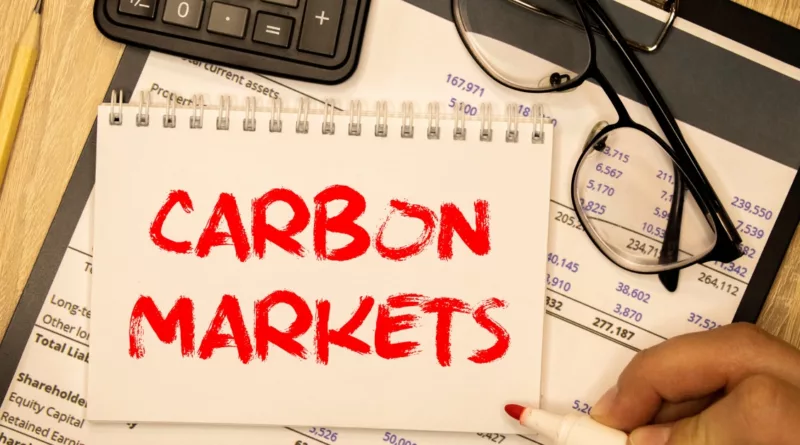Carbon emission trading, market solutions for climate action
As the world grapples with the urgent need to address climate change, carbon emission trading has emerged as a promising market-based approach to reducing greenhouse gas emissions. This innovative system, also known as cap-and-trade, creates economic incentives for companies and countries to limit their carbon footprint. In this article, we’ll explore the mechanics of carbon emission trading, its global impact, and the challenges and opportunities it presents in the fight against climate change.
The Basics of Carbon Emission Trading
Carbon emission trading is founded on a simple principle: put a price on carbon dioxide emissions and let the market drive reductions. The system works by setting a cap on the total amount of greenhouse gases that can be emitted by participating entities. This cap is then divided into tradable permits, each representing the right to emit a specific amount of greenhouse gases. Companies that reduce their emissions below their allotted level can sell their excess permits to others that are struggling to meet their targets.
The concept was first introduced on a large scale by the Kyoto Protocol in 1997, which established emissions trading as a key mechanism for countries to meet their carbon reduction commitments. Since then, various regional, national, and international carbon markets have been established, with the European Union Emissions Trading System (EU ETS) being the largest and most well-known.
The Global Landscape of Carbon Markets
Today, carbon markets operate across the globe, from California to China. As of 2024, over 60 carbon pricing initiatives have been implemented or are scheduled for implementation, covering about 22% of global greenhouse gas emissions. The largest markets include the EU ETS, China’s national ETS, and the Regional Greenhouse Gas Initiative (RGGI) in the northeastern United States.
These markets vary in scope, covering different sectors and greenhouse gases. For example, while the EU ETS focuses primarily on CO2 emissions from power plants and manufacturing industries, New Zealand’s ETS also includes forestry and waste sectors. The diversity of these systems reflects the complex nature of global emissions and the need for tailored approaches to different economic contexts.
The Economics of Carbon Trading
The economic rationale behind carbon trading is compelling. By putting a price on carbon emissions, it internalizes the environmental cost of greenhouse gas emissions into business decisions. This creates a financial incentive for companies to invest in cleaner technologies and more efficient processes. The system’s flexibility allows emissions reductions to occur where they are most cost-effective, theoretically leading to the most efficient allocation of resources in the fight against climate change.
The price of carbon credits fluctuates based on supply and demand dynamics within the market. Factors influencing price include the stringency of emissions caps, economic growth rates, technological advancements, and policy changes. For instance, the EU ETS saw carbon prices rise from around €5 per tonne in 2017 to over €80 per tonne in 2022, reflecting tighter emissions caps and increased climate ambition in the region.
Impact on Business and Innovation
Carbon trading has had a significant impact on business strategies and innovation. Companies operating under emissions trading systems have been forced to reassess their operations, often leading to increased energy efficiency and reduced emissions. For example, a study of the EU ETS found that it led to a 10% reduction in emissions from regulated firms compared to unregulated firms.
The system has spurred innovation in clean technologies. The promise of selling excess carbon credits has incentivized companies to invest in research and development of low-carbon technologies. This has contributed to the rapid advancement and cost reduction of renewable energy technologies like solar and wind power over the past decade.
Challenges and Criticisms
Despite its potential, carbon trading is not without its challenges and critics. One major concern is the risk of “carbon leakage,” where companies might relocate their production to regions with less stringent emissions regulations, potentially leading to an overall increase in global emissions. To address this, some systems have implemented border carbon adjustments, but these come with their own complexities and potential for international trade disputes.
Another criticism is that carbon trading can sometimes lead to the concentration of pollution in certain areas, as companies may choose to purchase credits rather than reduce their local emissions. This has raised environmental justice concerns, as these polluted areas are often home to marginalized communities.
The Role of Offsets in Carbon Markets
Carbon offsets play a significant role in many emissions trading systems. Offsets represent emissions reductions or removals that occur outside the capped sector, often in developing countries or in sectors like forestry that are difficult to include directly in a cap-and-trade system. Companies can purchase these offsets to meet part of their emissions reduction obligations.
While offsets can provide a cost-effective way to achieve emissions reductions and support sustainable development in poorer regions, they have also been a source of controversy. Critics argue that some offset projects may not represent genuine, additional emissions reductions, and that they can distract from the need for direct emissions cuts in industrialized countries.
Linking Carbon Markets: Towards a Global System
As carbon markets mature, there’s growing interest in linking different systems to create a more unified global carbon market. Linking can increase market liquidity, reduce price volatility, and potentially lead to more cost-effective emissions reductions. Some linkages already exist, such as between the California and Quebec cap-and-trade programs.
However, linking also presents challenges. Different systems may have varying levels of ambition, cover different sectors, or have different rules for offsets. Harmonizing these differences requires complex negotiations and can be politically sensitive. Despite these challenges, many experts see the gradual linking of carbon markets as a crucial step towards a more coordinated global response to climate change.
The Future of Carbon Trading
Looking ahead, carbon trading is likely to play an increasingly important role in global climate policy. The Paris Agreement explicitly recognizes the potential of international carbon trading to help countries meet their emissions reduction targets. Article 6 of the agreement provides a framework for countries to cooperate through carbon markets, although the detailed rules for this are still being negotiated.
Emerging technologies are also shaping the future of carbon trading. Blockchain, for instance, is being explored as a way to enhance the transparency and efficiency of carbon credit transactions. Meanwhile, advances in satellite monitoring and artificial intelligence are improving our ability to measure and verify emissions reductions, particularly in sectors like forestry.
As we conclude this exploration of carbon emission trading, it’s clear that while it’s not a silver bullet for solving climate change, it represents a powerful tool in our arsenal. By harnessing market forces to drive emissions reductions, carbon trading can complement other policy measures and technological innovations in the global effort to mitigate climate change. As these systems continue to evolve and expand, they have the potential to play a crucial role in the transition to a low-carbon future.
Case Studies: Success Stories and Lessons Learned
To fully appreciate the impact of carbon emission trading, it’s valuable to examine some real-world examples. The European Union Emissions Trading System (EU ETS), launched in 2005, provides a wealth of insights. Despite initial challenges, including over-allocation of permits and price volatility, the EU ETS has matured into a cornerstone of EU climate policy. By 2020, emissions from sectors covered by the EU ETS had fallen by about 35% compared to 2005 levels.
Another interesting case is the Regional Greenhouse Gas Initiative (RGGI) in the northeastern United States. This system, which covers the power sector, has not only achieved its emissions reduction targets but has also generated significant revenue for participating states. These funds have been reinvested in energy efficiency and renewable energy programs, creating a virtuous cycle of emissions reductions.
But not all carbon trading initiatives have been equally successful. The first phase of South Korea’s Emissions Trading Scheme, for instance, faced challenges due to a lack of market liquidity and concerns about the impact on industrial competitiveness. These experiences underscore the importance of careful market design and the need for ongoing adjustments as systems mature.
The Role of Carbon Trading in Corporate Sustainability Strategies
As carbon trading systems expand, they’re becoming an increasingly important consideration in corporate sustainability strategies. Many companies are now incorporating the price of carbon into their long-term planning, even in regions where they don’t currently face carbon pricing regulations. This “internal carbon pricing” helps businesses prepare for future policy changes and identify cost-effective emissions reduction opportunities.
Some companies are going beyond compliance, voluntarily purchasing carbon credits to offset their emissions and achieve carbon neutrality. This trend is particularly visible in consumer-facing industries, where environmental credentials can provide a competitive advantage.
The Path Forward
As we’ve explored in this article, carbon emission trading represents a powerful market-based approach to addressing climate change. By putting a price on carbon and allowing the market to find the most cost-effective ways to reduce emissions, these systems can drive significant reductions while spurring innovation in clean technologies. However, carbon trading is not without its challenges. Issues such as carbon leakage, the integrity of offset projects, and the complexities of linking different systems all need to be carefully managed. Moreover, while carbon trading is an important tool, it’s not a panacea. It needs to be part of a broader policy mix that includes direct regulations, support for research and development, and measures to ensure a just transition to a low-carbon economy.
Looking ahead, the role of carbon trading in global climate efforts is likely to grow. As more countries and regions implement these systems and explore linkages between markets, we could see the emergence of a more integrated global carbon market. This could provide a powerful mechanism for channeling investment towards low-carbon solutions on a global scale.
Ultimately, the success of carbon trading – and indeed, of our entire response to climate change – will depend on sustained political will, innovative policy design, and the active engagement of businesses and citizens around the world. As we face the urgent challenge of climate change, carbon trading offers a promising path forward, harnessing the power of markets in service of our shared environmental goals.





